|
|
|
|
|
|
Very Practical Handguns

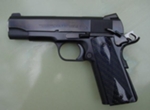 To me, "practical" in the context of firearms,
handguns in particular, means creating and adding all the features
necessary to maximize reliability, handling, and accuracy (in that order
and only in that order). These features can vary according to the use
and the user, although some of course are universal: throating for
reliable feeding, extractor tuning, good sights, a decent trigger, to
name some. Other enhancements may be less critical, but can still
constitute a worthwhile edge in competition or defense. As in any quest
for performance, the first steps are relatively easy and inexpensive,
and give a big return; you are 75% there. The next 20% is going to cost
more for less of a return... the last 5% is going to be very expensive
and not give much back in the way of increased performance. I believe
that form follows function, but making a gun look great doesn't do any
harm as long as the "real" stuff gets first priority. An ugly,
all-business gun has a certain appeal, but having
perfect checkering, no sharp edges, and well matched and finished
surfaces does not have to mean it's all show and no go. As you can see
in the pictures on this page, once the functionality is there, I try to
get as close to cosmetic perfection as possible.
To me, "practical" in the context of firearms,
handguns in particular, means creating and adding all the features
necessary to maximize reliability, handling, and accuracy (in that order
and only in that order). These features can vary according to the use
and the user, although some of course are universal: throating for
reliable feeding, extractor tuning, good sights, a decent trigger, to
name some. Other enhancements may be less critical, but can still
constitute a worthwhile edge in competition or defense. As in any quest
for performance, the first steps are relatively easy and inexpensive,
and give a big return; you are 75% there. The next 20% is going to cost
more for less of a return... the last 5% is going to be very expensive
and not give much back in the way of increased performance. I believe
that form follows function, but making a gun look great doesn't do any
harm as long as the "real" stuff gets first priority. An ugly,
all-business gun has a certain appeal, but having
perfect checkering, no sharp edges, and well matched and finished
surfaces does not have to mean it's all show and no go. As you can see
in the pictures on this page, once the functionality is there, I try to
get as close to cosmetic perfection as possible.
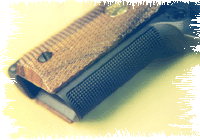 I am not afraid to show you close-ups of the checkering, which I do by a
method of my own concoction that I have not seen used elsewhere. No, it
isn't done by a kindly old gent in spectacles and a white apron, hunched
over a bench, using files. But it definitely qualifies as being
"done by hand", and it comes out such that no pyramid will be
different from any other by more than a thousandth or two. I go over it
all with a 10X loupe to make sure it is perfect to the naked eye. I have
known some people to turn their noses up at checkering not done with
files; how silly! I should hope the goal would be flawless and
functional checkering; it is mine, at least. My method is not less work,
it is just more precise. I generally do 90 degree checkering for carry
guns, 20 to 30 lines per inch, depending on the size of the gun and
frontstrap thickness.
I am not afraid to show you close-ups of the checkering, which I do by a
method of my own concoction that I have not seen used elsewhere. No, it
isn't done by a kindly old gent in spectacles and a white apron, hunched
over a bench, using files. But it definitely qualifies as being
"done by hand", and it comes out such that no pyramid will be
different from any other by more than a thousandth or two. I go over it
all with a 10X loupe to make sure it is perfect to the naked eye. I have
known some people to turn their noses up at checkering not done with
files; how silly! I should hope the goal would be flawless and
functional checkering; it is mine, at least. My method is not less work,
it is just more precise. I generally do 90 degree checkering for carry
guns, 20 to 30 lines per inch, depending on the size of the gun and
frontstrap thickness.
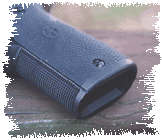 I have been doing the relief under the trigger guard on 1911's
(and others) since 1985. I got the idea from my .380 Mauser HsC, and it
wasn't until several years later that I saw others doing it (and I am
not saying they got the idea from me). Another thing I have been doing
since then that I have yet to see done elsewhere, is removing metal from
the bottom of the magwell area, to the same level as the cut at the
bottom of the frontstrap that receives the tab at the front of the
magazine base. This makes for more positive seating of a magazine that
does not have a slam pad on it. A slam pad on the magazine of a carry
gun detracts ever so slightly from concealability. For this reason, I
prefer to see the gun carried with a standard magazine with no slam pad,
though spare mags ought to have them. With this little mod, though, a
tap-rack-bang drill is more positive, and if the first magazine should
come out in a scuffle or for any other reason need to be reseated, reseating it
will be more positive.
I have been doing the relief under the trigger guard on 1911's
(and others) since 1985. I got the idea from my .380 Mauser HsC, and it
wasn't until several years later that I saw others doing it (and I am
not saying they got the idea from me). Another thing I have been doing
since then that I have yet to see done elsewhere, is removing metal from
the bottom of the magwell area, to the same level as the cut at the
bottom of the frontstrap that receives the tab at the front of the
magazine base. This makes for more positive seating of a magazine that
does not have a slam pad on it. A slam pad on the magazine of a carry
gun detracts ever so slightly from concealability. For this reason, I
prefer to see the gun carried with a standard magazine with no slam pad,
though spare mags ought to have them. With this little mod, though, a
tap-rack-bang drill is more positive, and if the first magazine should
come out in a scuffle or for any other reason need to be reseated, reseating it
will be more positive.
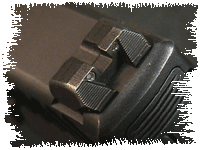 One major shortcoming that is shared by almost the entire
gunmaking industry right now (Kimbers are a definite exception), is that
they are not just pistols, they are also edged weapons! Sharp edges are
everywhere. Like a short-tempered Siamese cat, if not handled carefully,
many out of the box pistols will make you bleed. Try a stoppage
reduction like wiping off a stovepipe, and you might need a Band-Aid.
The pistols pictured on this page have had all their teeth and claws
pulled.
One major shortcoming that is shared by almost the entire
gunmaking industry right now (Kimbers are a definite exception), is that
they are not just pistols, they are also edged weapons! Sharp edges are
everywhere. Like a short-tempered Siamese cat, if not handled carefully,
many out of the box pistols will make you bleed. Try a stoppage
reduction like wiping off a stovepipe, and you might need a Band-Aid.
The pistols pictured on this page have had all their teeth and claws
pulled.
 I have developed a method for checkering contoured backstraps such as
those found on the Browning HP and CZ 75. It is a lot more work...but
can be done.
I have developed a method for checkering contoured backstraps such as
those found on the Browning HP and CZ 75. It is a lot more work...but
can be done.
To checker or not to checker? Different gurus have different answers. While some want it aggressive and sharp ("I want it to make me bleed," I often hear), others say it is detrimental to a working gun. Some go a little further and almost imply that it's nothing but decoration and makes a gun...unmanly. I've heard it said that smooth is better because you don't get locked-in to a poor grasp if your draw is imperfect. I personally have not experienced that, but I will say that carry guns I checker at 20 LPI are almost always done with 90°, not 60°, checkering; it is less sticky until a full grasp is exerted, and it tears up your clothing less. On this question my answer can only be: it's up to you. If you shoot 50-100 rounds a week and then go to a school or something where you shoot 1,000 in two days you may feel it, but that's not your daily reality. If 500 rounds is your daily reality, your hands are tough enough for just about anything and you don't need my advice on checkering!
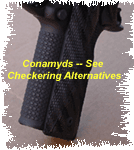 I don't favor compensators or ports of any kind for a true
defensive handgun. They are fine as long as a proper Weaver or Isocoles
stance is used, but in a very close ordeal, say a chest-to-chest
scuffle, if you trigger a shot with your face over the ports, you are
probably deaf and blind, right now. If you fire one under a car, from
inside a car, or in some other confined space, well, let's just say they
are extra loud and you won't like it very much. Another thing I prefer
not to do is put front cocking serrations on Officer's ACP-length guns
as they wind up being right over the area of the slide that bangs the
frame in recoil. I have not heard of one breaking here but the
serrations would tend to promote a crack. Governent Models and most
others, no prob.
I don't favor compensators or ports of any kind for a true
defensive handgun. They are fine as long as a proper Weaver or Isocoles
stance is used, but in a very close ordeal, say a chest-to-chest
scuffle, if you trigger a shot with your face over the ports, you are
probably deaf and blind, right now. If you fire one under a car, from
inside a car, or in some other confined space, well, let's just say they
are extra loud and you won't like it very much. Another thing I prefer
not to do is put front cocking serrations on Officer's ACP-length guns
as they wind up being right over the area of the slide that bangs the
frame in recoil. I have not heard of one breaking here but the
serrations would tend to promote a crack. Governent Models and most
others, no prob.
These are just examples and definitely do not show the limits. There will be certain jobs I will politely decline, certain ones where I may refer you to somebody else. For general repairs, etc., I will not be your best bet; better to use me for the more unusual, high-end stuff.
I prefer to take inquiries via Email so as to be able to keep my nose to the grindstone as much as possible.
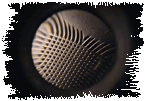 |
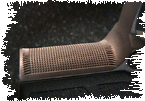 |
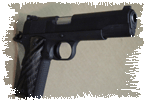 |
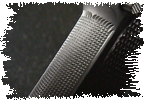 |